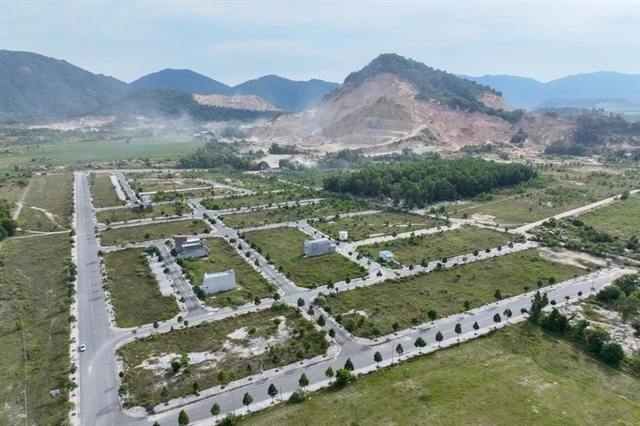At the 9th session of the 15th National Assembly, the Government reported 2,200 projects across the country are on hold, involving nearly VNĐ5.9 quadrillion (US$235 billion) and more than 347,000 hectares of land.

HÀ NỘI — Thousands of projects, worth quadrillions of đồng and covering hundreds of thousands of hectares, are stalled due to legal and administrative bottlenecks, wasting national resources and threatening Việt Nam’s long-term growth ambitions, said economists and industry insiders.
At the 9th session of the 15th National Assembly, the Government reported that 2,200 projects across the country are on hold, involving nearly VNĐ5.9 quadrillion (US$235 billion) and more than 347,000ha of land.
“We are tying our own hands and squandering development opportunities by allowing such vast resources to be wasted,” economist Trần Đình Thiên warned.
He noted that to escape the middle-income trap, Việt Nam must pursue a growth model unlike its predecessors. However, he warned: “Private investment is weak in both volume and structure, public investment is slow to disburse, and FDI remains limited in technological capacity.”
The economy’s monetary circulation rate, also referred to as velocity of money, is just 0.55 to 0.65 turns per year, far below the typical 2, indicating sluggish capital flows.
Domestic demand remains weak post-COVID-19, while exports are dominated by the FDI sector, accounting for 72 to 75 per cent of total export value. Meanwhile, the number of businesses exiting the market is nearing the number of new ones established.
Đậu Anh Tuấn, Deputy Secretary General of the Việt Nam Chamber of Commerce and Industry (VCCI), attributed the stagnation to institutional obstacles. According to the latest Provincial Competitiveness Index (PCI) survey, many private firms spend years navigating administrative procedures before launching projects.
“For example, a road infrastructure company can complete a highway in six months, but the paperwork can take years. Even R&D projects, highly encouraged, can face land procedures dragging on for three years,” he said.
Tuấn also pointed to Việt Nam’s large 'grey zone' economy, particularly household businesses that are underrepresented in national data and poorly integrated into policy frameworks.
He called for strategic policies to support deeper integration of domestic firms into global supply chains, particularly in key markets like the US. This includes strong commitments from FDI enterprises and clear regulations in industries such as the chemicals and energy sectors.
The Chief Economist at BIDV, Dr Cấn Văn Lực, said Việt Nam must adopt a new investment strategy focused on efficiency and sustainability, not just capital volume. He proposed simultaneously advancing three pillars: investment, technology absorption, and innovation, to improve returns and reduce capital needs.
“We must use each đồng more effectively. The only way is to improve the business environment,” Lực said. “While the world is embracing bold reforms and unprecedented fiscal and monetary measures, we are moving too slowly.”
Unblocking stalled projects should be a top priority to revive capital flows and investor confidence.
Dr Thiên stressed the need to break free from the outdated 'ask-give' bureaucratic mindset.
“This is not just about policies, but a culture shift. Việt Nam must step out of its comfort zone and adapt to a rapidly changing world,” he said.
Associate Professor Dr Lê Bộ Lĩnh, former Vice Chairman of the National Assembly’s Committee on Science, Technology and Environment, highlighted the lack of a unified national strategy on science and innovation.
“Currently, we have too many scattered strategies on green growth, innovation, AI, and digital transformation, but they are underfunded and poorly aligned,” he said.
He urged Việt Nam to adopt a similar focus, with clear priorities and resources, while letting the market lead innovation.
“Without market incentives, no amount of public funding will create breakthrough technologies. The Government should set direction, but private enterprises must lead,” Lĩnh said.
Lĩnh also called for a governance overhaul in science and technology, shifting budget allocation from direct planning to competitive funding through dedicated funds. Human resources and public science literacy must improve, and administrative procedures must be simplified, including permits for international conferences or visas for foreign experts.
The former Vice Chairman of the National Assembly’s Economic Committee, Nguyễn Văn Phúc, cautioned that reform could not rely solely on economists. “We need input from legal scholars, scientists and cultural experts to create a cohesive institutional system.”
He also raised concerns about urban administrative reforms. Under Politburo Resolution No 06-NQ/TW, Việt Nam aims to have around 1,000 urban centres by 2025 and 1,200 by 2030, contributing over 80 per cent of GDP. However, the restructuring of provincial cities and towns into wards could dilute their role as growth engines.
“There has been little discussion about how these changes will affect development. Without a clear urban core, the entire growth model may need to be rethought,” he said. —VNS





